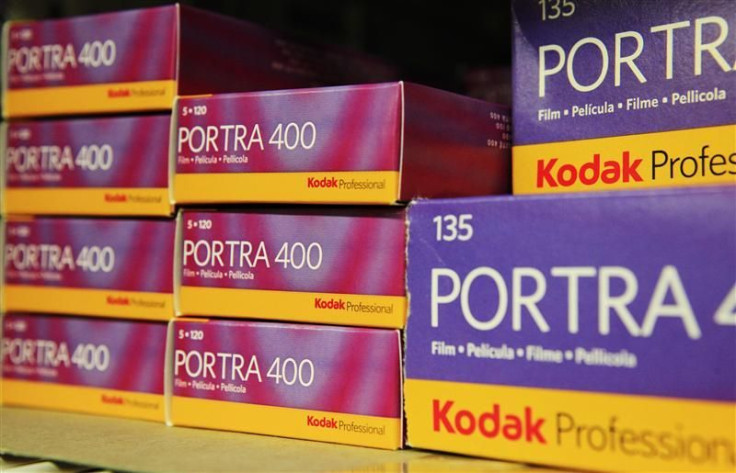The Final Kodak Moment: Why Bankruptcy for Imaging Icon is a Tragedy but Also a Promise
Kodak's digital transformation hasn't worked. Will Japanese makers feed off its carcass?

Long-suffering investors may wonder what to do with their Eastman Kodak shares now that the company has filed for bankruptcy in New York City.
Kodak shares Wednesday closed at only 55 cents, miles below their $40 and even $90 price of yesteryear, when the Rochester, N.Y.-based imaging pioneer was a member of the Dow Jones Industrials. At that price, the market capitalization of the whole company is only $150 million.
Its enterprise value, though is $815 million and if the gamble by CEO Antonio Perez is right, the ongoing auction of its imaging patents could be worth another $3 billion. That could mean that a reorganized Kodak could emerge ready to do battle with the Japanese companies that made billions off its invention of the digital camera, rivals like Hewlett-Packard and Lexmark in the printer business and others with online photography.
In filings, Kodak listed assets of $5.1 billion and liabilities of $6.8 billion. It also said Citigroup will extend a $950 million debtor-in-possession loan to fuel ongoing activities. Clearly, Kodak had a terrible holiday season because Perez was counting on strong cash flow to buoy the company. Fourth-quarter results were to be announced Jan. 26.
Still, the Kodak name alone conjured images and photography. Consumers from Utah to Uruguay bought Kodak cameras and film and took it to camera shops for development. Doctors took x-rays with diagnostic cameras and printed them out on Kodak paper. Names like Kodachrome were household words. The company, after all, was founded in 1880.
On Sept. 30, after rumors of bankruptcy triggered a run on the shares, Kodak issued a statement that it was not planning to file for bankruptcy but had hired the prestigious law firm Jones Day for advice. Last month, it had to deny the prospect again.
The decision is now clear: file for bankruptcy, which is no shame for an ordinary company, but quite a tragedy for the corporation that for years had huge success with its Kodak moment ad campaign. Now it has to emerge slimmer and trimmer or else vanish.
Here are five reasons why pulling the plug and shutting down Kodak forever would be an American tragedy:
It would show that a nineteenth century pioneer couldn't make it in the twenty-first century. There are plenty of other old industrial companies founded by people like Thomas Edison and Henry Ford that are doing fine, that managed to adapt to changes in the marketplace and alter their strategy. Yet Kodak foundered for years with foolish acquisitions (it bought Sterling Drug, which included Bayer aspirin in 1988 before getting out in 1994) and divestitures like spinning off Eastman Chemicals (now with a market capitalization of $6.3 billion).
Now that everyone has a mobile phone, and tablets like the iPad and the Kindle Fire are going to revolutionize photography and imaging, Kodak ought to be the life of the party. That could be one reason why the likes of Apple, Amazon and Google are said to be looking at the patents.
Kodak's demise would be Japan's gain. Today, Japanese rivals -- like Fuji (film); Canon, Nikon and Olympus (cameras); and Panasonic and Sony (consumer electronics) -- are ubiquitous in all kinds of imaging. To be sure, they have great technologies and sales abilities, but those are all things they learned from Kodak.
In bankruptcy, if Kodak decides to sell off units, these companies would be first in line to pick up the valuable pieces.
It would prove that even a perception of value was wrong. Several years ago, Kohlberg Kravis Roberts, the private equity giant that may be best known for masterminding the RJRNabisco buyout, bought into Kodak and won two seats on the board. Obviously, KKR wouldn't have risked its cash for no reason. But it also bought into Sun Microsystems late in its history, too. Sun Microsystems has now been absorbed into Oracle. Two KKR directors quit the Kodak board last month.
Bankruptcy would place Kodak in the same league as GM, Chrysler, United Airlines and others. All those great companies emerged slimmer and better-placed to win after bankruptcy. Conceivably, Kodak could emerge as solely an intellectual property vendor and get rid of all its consumer and professional products lines.
Printers could go to HP, Lexmark or Canon. Kodak Gallery could go to Amazon or eBay. The camera lines could go to a Japanese company. The retail distribution system might be sold to specialists or the likes of FedEx or UPS.
Or maybe a judge could demand a complete shake-up and tell CEO Perez that he has a year to act. That would be tricky in what still looks like a weak global economy.
It would give New York a black eye. Few industrial companies are so identified with their home states and cities as Kodak is with Rochester, N.Y. Xerox, which started there and had its own near-death experience, still has a big Rochester presence but shifted its headquarters to Stamford, Ct.
Gov. Andrew Cuomo last August jubilantly snatched up $4 billion in technology investment from New York's own IBM as well as from Intel, GlobalFoundries, Taiwan Semiconductor Manufacturing and Samsung Electronics. The money is largely for new chips and nanotechnology development, things that Kodak could benefit from.
The collapse of a technology icon would surely dampen investment attitude. It would also call into question the future of 18,800 employees, not all of whom are in New York.
© Copyright IBTimes 2024. All rights reserved.






















